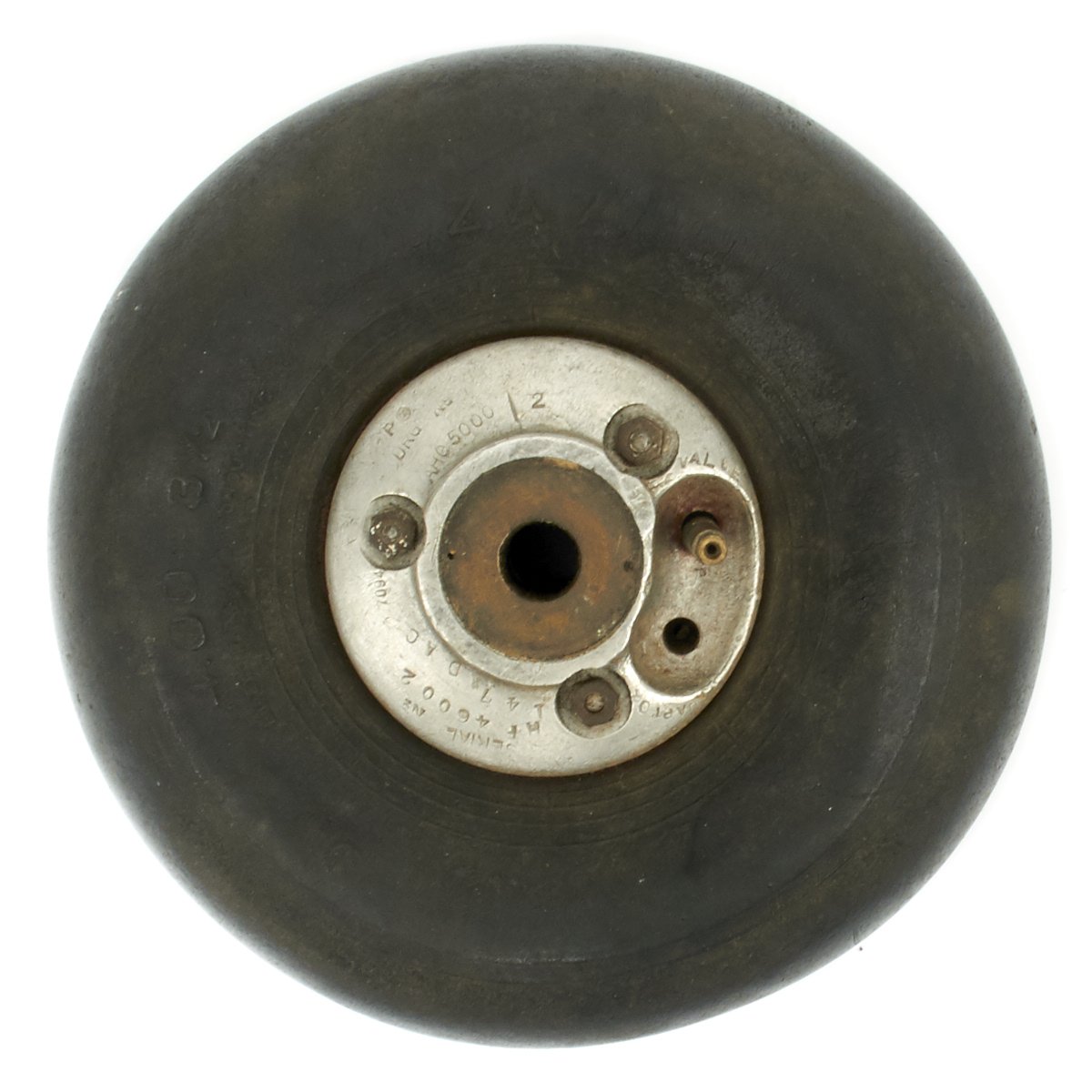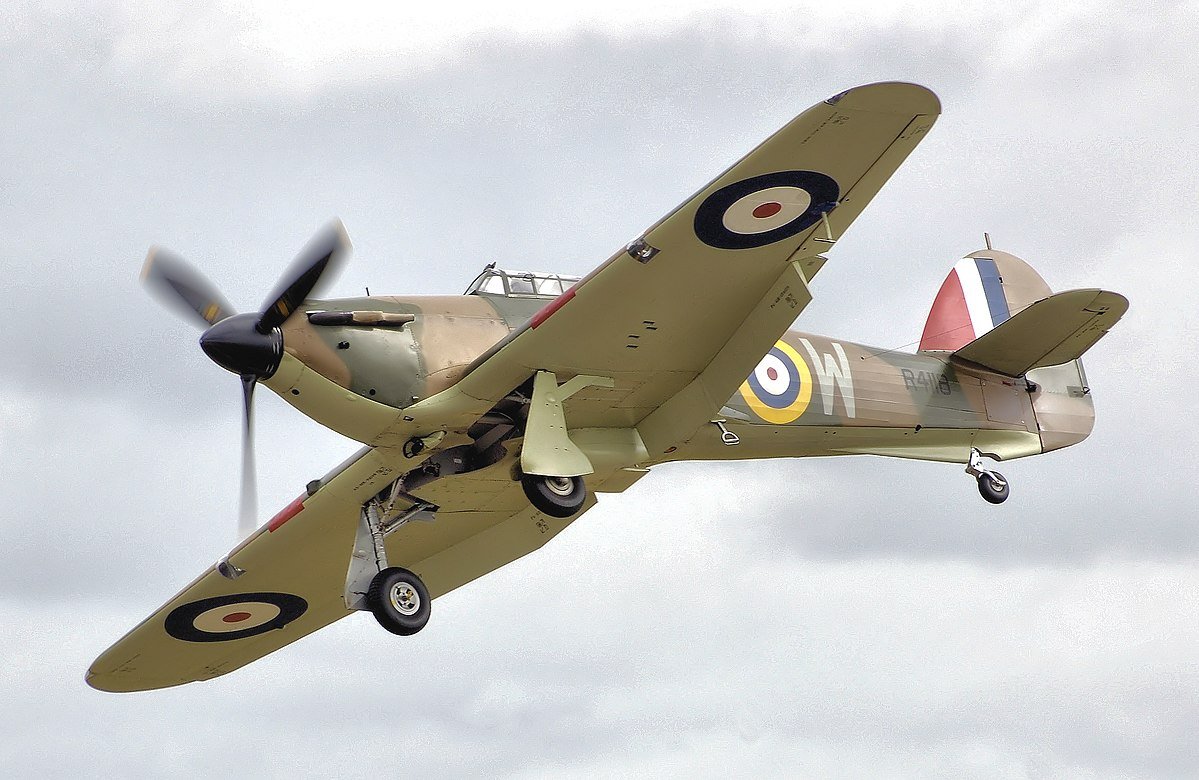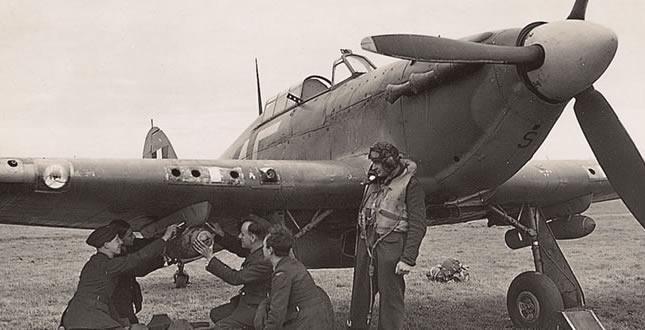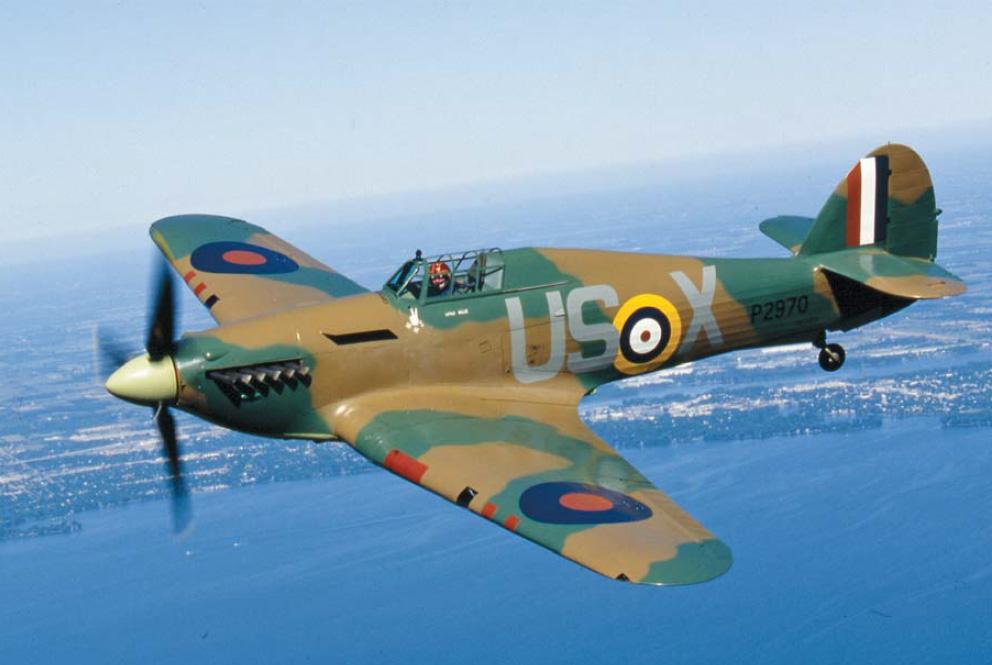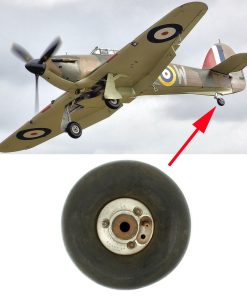Original British WWII Hawker Hurricane Fighter Aircraft Rear Wheel Original Items
$ 650,00 $ 195,00
Original Item: Only One Available. The Hawker Hurricane is a British single-seat fighter aircraft of the 1930s–1940s that was designed and predominantly built by Hawker Aircraft Ltd. for service with the Royal Air Force (RAF). Although overshadowed in the public consciousness by the Supermarine Spitfire’s role during Battle of Britain in 1940, the Hurricane actually inflicted 60 percent of the losses sustained by the Luftwaffe in the engagement. The Hurricane went on to fight in all the major theatres of The Second World War.
The Hurricane originated from discussions during the early 1930s between RAF officials and British aircraft designer Sir Sydney Camm on the topic of a proposed monoplane derivative of the Hawker Fury biplane. Despite an institutional preference at the time for biplanes and repeated lack of interest by the Air Ministry, Hawker chose to continue refining their monoplane proposal, which resulted in the incorporation of several innovations that would become critical to wartime fighter aircraft, including retractable undercarriage and a more powerful engine in the form of the newly developed Rolls-Royce Merlin engine. In late 1934, the Air Ministry placed an order for Hawker’s “Interceptor Monoplane”. On 6 November 1935, the prototype Hurricane, K5083, performed its maiden flight.
In June 1936, the Hurricane was ordered into production by the Air Ministry; it entered squadron service on 25 December 1937. The manufacture and maintenance of the aircraft was eased by its use of conventional construction methods, which enabled squadrons to perform many major repairs themselves without external support. The Hurricane was rapidly procured prior to the outbreak of the Second World War in September 1939, when the RAF had 18 Hurricane-equipped squadrons in service. The aircraft was relied upon to defend against the numerous and varied German aircraft operated by the Luftwaffe, including dogfighting with the capable Messerschmitt Bf 109, across multiple theatres of action.
The Hurricane evolved through several versions and adaptations, as bomber-interceptors, fighter-bombers and ground support aircraft in addition to fighters. Further navalised versions, which were popularly known as the Sea Hurricane, had modifications enabling their operation from ships. Some were converted to be used as catapult-launched convoy escorts. By the end of production in July 1944, 14,487 Hurricanes had been completed in Britain and Canada.
This rubber rear wheel features an aluminum and brass internal rim. The rubber is embossed 4.00 – 3 1/2 Electrical Conducting ZAZ. The rim is marked with serial number, maker markings and various others. Offered in good condition it measures approximately 10 1/2 inches in diameter and 5 inches wide.
Fast Shipping with Professional Packaging
Thanks to our longstanding association with UPS FedEx DHL, and other major international carriers, we are able to provide a range of shipping options. Our warehouse staff is expertly trained and will wrap your products according to our exact and precise specifications. Prior to shipping, your goods will be thoroughly examined and securely secured. We ship to thousands clients each day across multiple countries. This shows how we're dedicated to be the largest retailer on the internet. Warehouses and distribution centres can be located throughout Europe as well as the USA.
Note: Orders with more than one item will be assigned a processing date depending on the item.
Before shipping before shipping, we'll conduct a thorough inspection of the items you have ordered. Today, the majority of orders will be delivered within 48 hours. The delivery time will be between 3-7 days.
Returns
The stock is dynamic and we cannot completely manage it because multiple stakeholders are involved, including our factory and warehouse. So the actual stock may alter at any time. It's possible that you may not receive your order once the order has been made.
Our policy is valid for a period of 30 days. If you don't receive the product within 30 days, we are not able to issue a refund or an exchange.
You can only return an item if it is unused and in the same state as the day you received it. You must have the item in its original packaging.
Related products
Uncategorized
Australian WWII Owen MK1 Machine Carbine SMG Custom Fabricated Replica with Sling Original Items
Uncategorized
Uncategorized
Uncategorized
Uncategorized
Uncategorized
Uncategorized
Band of Brothers ORIGINAL GERMAN WWII Le. F.H. 18 10.5cm ARTILLERY PIECE Original Items
Uncategorized
Uncategorized
Uncategorized
Uncategorized
Armored Burgonet Helmet & Polearm from Scottish Castle Leith Hall Circa 1700 Original Items
Uncategorized
Uncategorized
Uncategorized
Uncategorized
Angolan Rebel 1970s era 60mm Inert Display Mortar from Angolan Civil War Original Items

